By STEVEN HECKMAN
Scenario: An engine pulls up to a business, and a large crowd of people are standing outside. Building fire alarms can be distinctly heard in the background, but no smoke or observable signs of fire are seen. The engine company exits the truck, ready to go to work. The officer goes to and speaks to someone in the crowd who appears to be in charge. The report back is that someone burned food in the microwave—a “cooking error.” Another false alarm!
Depending on your department’s standard operating procedures (SOPs), several things could happen at this point. Members may start placing some tools back onto the apparatus, and the company may start to relax some. Other arriving engine companies may get the word to clear out or to stand by. In many departments, the officer or company with standard response equipment in hand will make entry into the building, double check the initial cause, and look for the reporting fire alarm device. Once it is confirmed that all is clear, they then work with building management and either watch them reset the alarm system or reset it themselves and clear the building for reentry. The question is, “Was this really another false alarm, or did the system perform as designed?” The idea of acquiring benefits from unwanted fire alarms could easily be called into question or described as a simple contranym.
Fire alarm activation and response is a routine, daily occurrence and often a source of frustration among many fire service professionals. Fire alarm activations constitute one of those “You never know” situations. There is a slight emotional response when going on any call, and some may experience a slight disappointment once we ascertain that the alarm is from a nonfire event. That disappointment, no matter how slight, is a basic human response, but how can we turn that discontent into something positive?
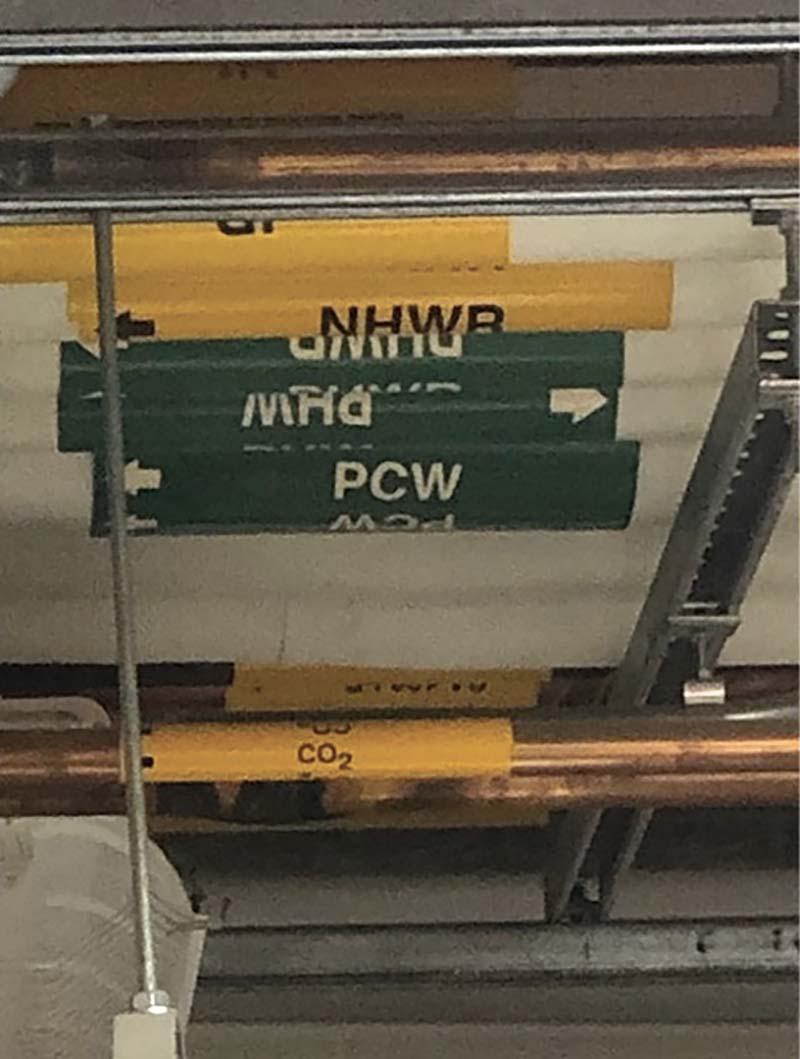
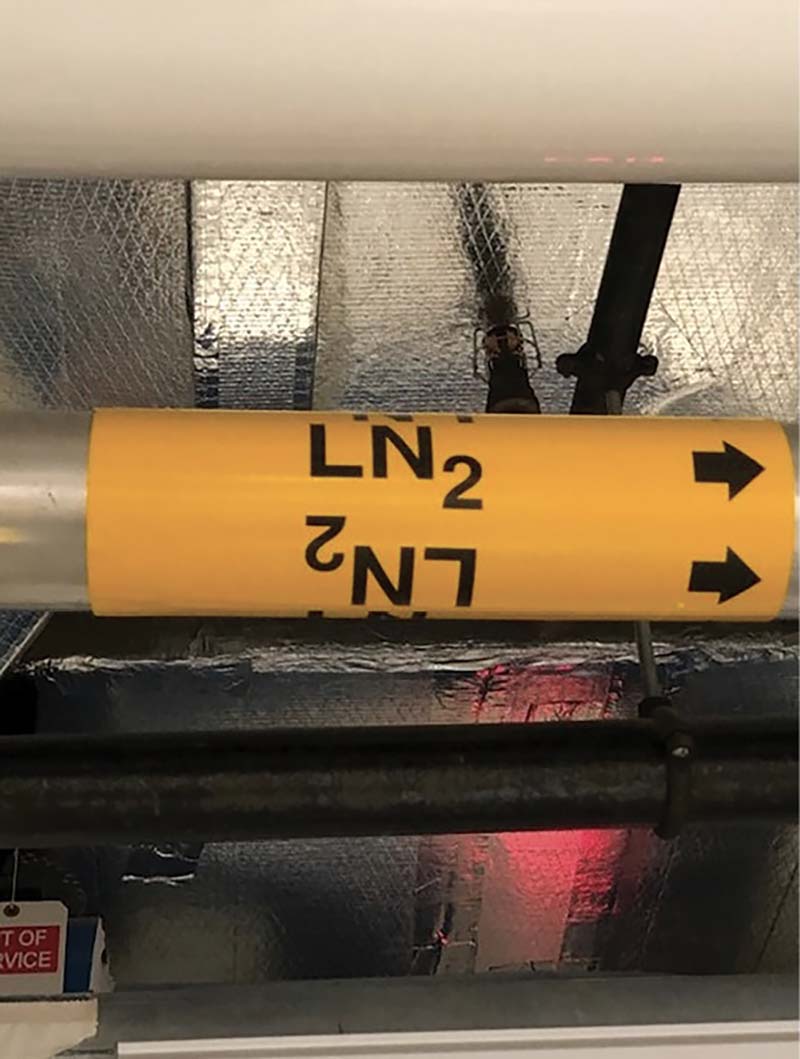
(1) Many processes in use at various facilities beyond standard electricity and gas utilities can provide valuable insight to responders as to the hazards a building contains. (Photos by author unless otherwise noted.) (2) Liquid nitrogen (LN2), although considered nontoxic, poses many dangers (asphyxiation, cryogenic burns, low visibility) if the system malfunctions. If this system has a leak or other failure, how could it be interpreted by a fire detection system?
The Imperfections of an Early System
Unwanted fire alarms (Figure 1) or fire alarm system activation from nonfire events is an unfortunate part of the fire alarm industry ever since the fire alarm system was invented. The idea of using electricity for fire alarm signaling was born in 1851 with the invention of the fire alarm telegraph, and the fire alarm system has been an integral part of public and private fire protection and subject to improper activation. Proclaimed as “perfect” by those who invented it, we quickly learned that it had its share of imperfections, many of which were caused by the very humans it was designed to protect.
For the next 160-plus years, these imperfections were often exacerbated by humans. An early example of this can be found in an article in the September 29, 1896, issue of Fire and Water Engineering. The article highlighted a speech from Massachusetts Fire Captain William Brophy at the fireman’s convention, where he presented on, “The fire alarm telegraph, general history, and latest improvements.” In his presentation, Brophy shared many comical musings of the “human cyclones that would storm the box” and other lighthearted examples of why improvements to fire alarm systems would be necessary. He said, “Later, a ratchet and pawl were added, so that those who, owing to the state of minds, could not tell their right hand from their left, could not reverse the numbers by turning the crank to the wrong way.” (pg. 460) [Without this improvement; Box 41 could be transmitted to the central station as Box 14.]
A review of the historical timeline of fire alarm systems is one of continuous enhancement. As the benefits of fire alarm systems would expand, we would see improvements in the areas of reliability, signal initiation, and early warnings. Minimum codes and standards would be developed for installation, inspection, testing, and maintenance of fire alarm systems. As these systems became more automatic and part of a building’s fire protection strategy, a top priority has been to remove the need for and reliance on humans. This would alleviate some deficiencies but would ultimately introduce others.
Overcoming Expectation Bias
As the need to provide protection in buildings at all times increased, fire alarm systems would be designed to provide an automatic response. To do so, early automatic fire alarm systems would rely specifically on the by-product of combustion principle: heat. The melting, fusing, or separating of electrical conductors from the fire’s heat would change the state of an electrical switch and become a primary method to transmit the fire alarm signal. That signal would carry electricity to activate a bell or light or be tied directly to the municipal fire alarm box outside to provide a fire warning. Additionally, heat could also have an indirect implication; as it causes the expansion of air or other gases in a given area, we would see the advent of pneumatic activated devices—called “thermostats”—and the rise of liner tube heat detection. Activating a “switch” through the pneumatic expansion of air within these devices, electricity activates a bell or light or sends a signal to the street box for transmission to the fire department. These heat-activated switches carried electrical current and relied on the separation or the connectivity of a circuit, which would occur in the event of a fire. These devices were generally reliable and recognized by the fire alarm industry and the fire service as essential to building fire protection. These devices would be called heat detectors, fire detectors, thermoelectric detectors, and automatic fire detectors.
Naming these devices implied their use and an expectation. However, they were not perfect; their electrical connections are often exposed above the ceiling. To date, things haven’t changed. Because the conductors and terminals for these devices are exposed, water—which conducts electricity and seeks its way to the lowest level—can cause unwanted alarms during rainstorms, melting snow, or other building infrastructure leaks, making its way into these components and causing a short circuit, which would then be conveyed as a fire alarm. Additionally, installing these devices in areas where heat was generated by normal mechanical or chemical processes could also cause unwanted alarms. Furthermore, wires are often subject to being disturbed during renovation or other building activity or were found gnawed on by rodents.
The very infrastructure for these devices could also be the cause of unwanted or false alarms. Many unwanted activations from these ancillary causes disqualifies their name (heat, fire, detector, and so on), as ultimately implied.
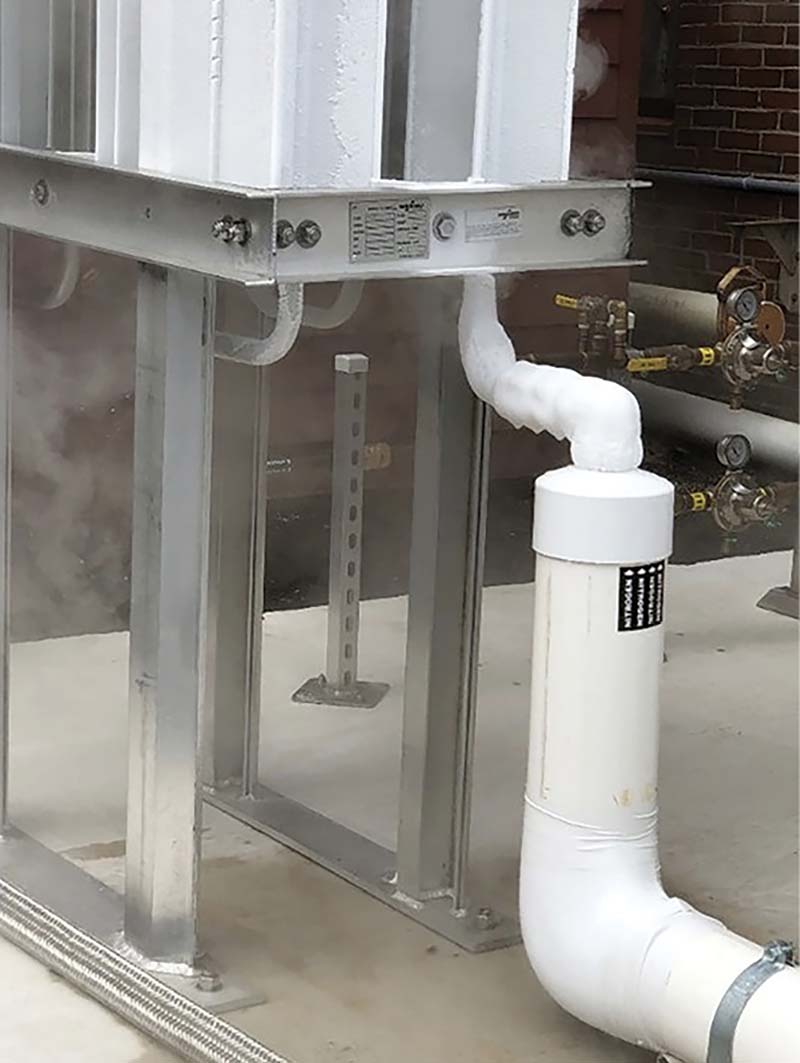
(3) A mechanical failure of a liquid N2 system caused significant icing of the heat exchanger and associated equipment, causing a relief valve to operate, discharging vapors and gas. What if the mechanicals to this system failed inside the building?
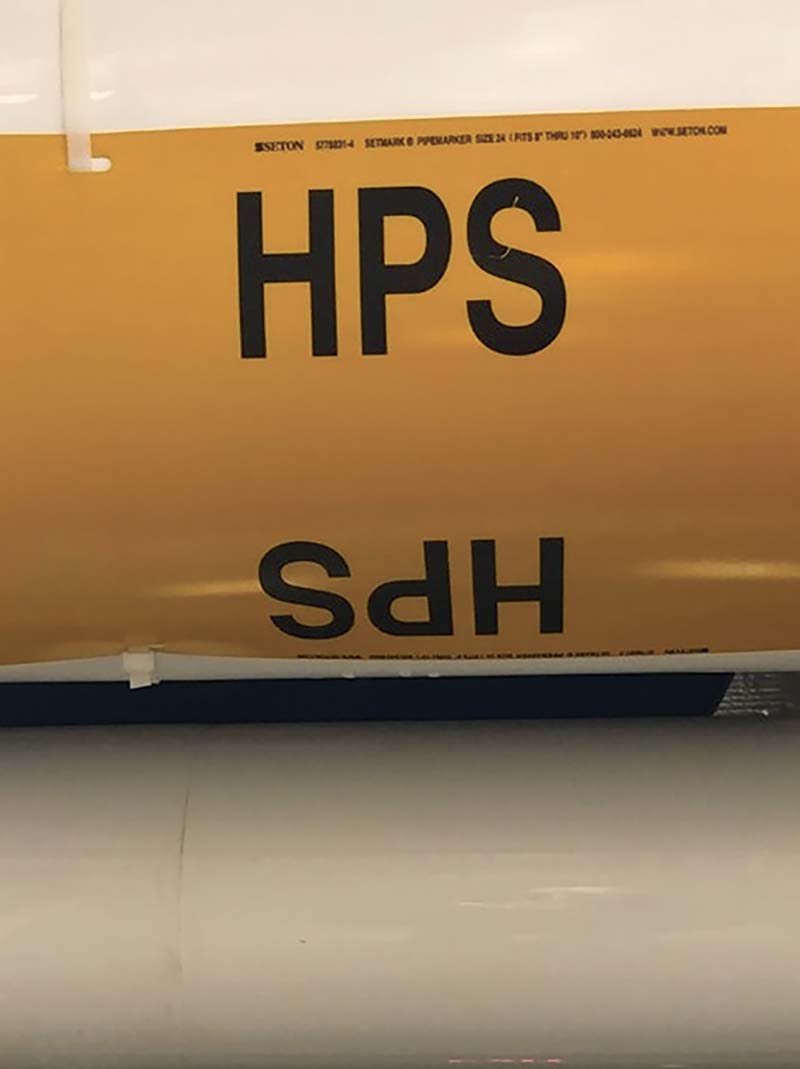
(4) Signage indicates “HPS” for high-pressure steam. An uncontrolled steam release because of a wide range of mechanical failures will mimic several fire signatures and can easily be misidentified by the fire alarm system as smoke and/or heat, causing an unwanted alarm.
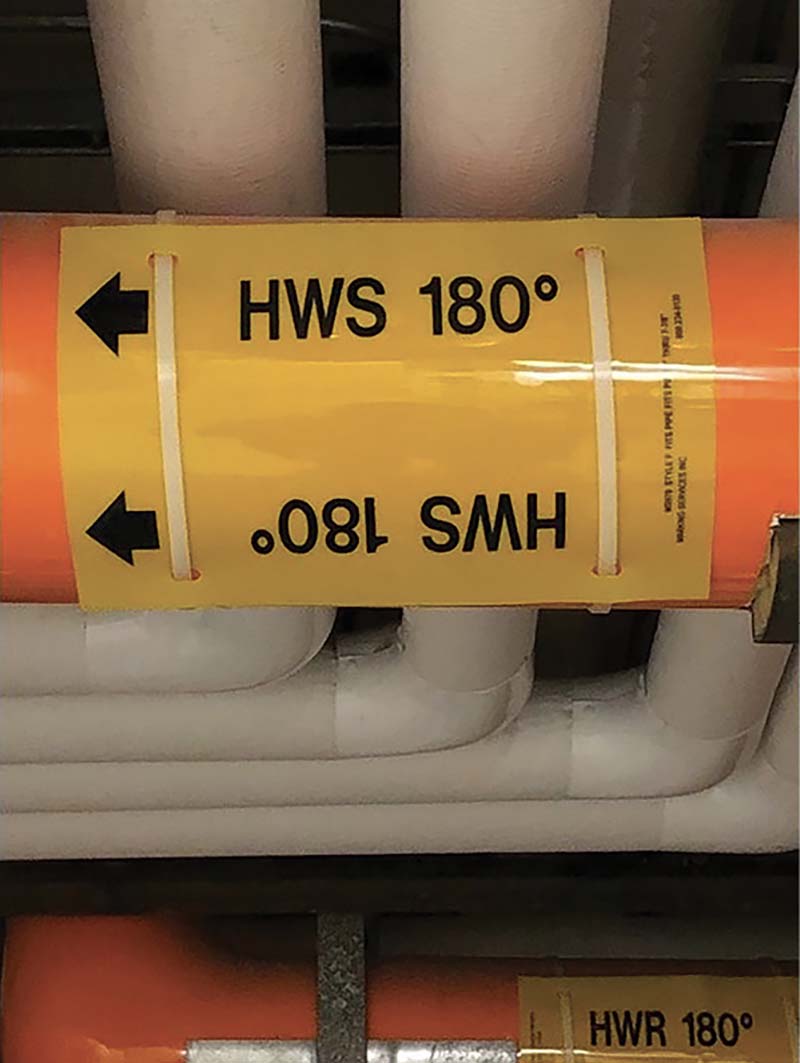
(5) Hot water: If this system fails, how could it be interpreted by a fire detection system? What additional hazards would this present to responding crews?
As automatic fire alarm systems continued to improve into the early to mid-20th century, we would see another mainstream automatic fire device that relies on another specific by-product of combustion: smoke. From its inception, the smoke detector provided an extremely fast response and was recognized as being able to provide the earliest of warnings. However, it, too, wasn’t perfect! Smoke detection had, and still has, one big problem identified by its early inventors: the false alarm.
A quick look at the properties of smoke (as we in the fire service have been taught) is that it is made up of unburned fuel particles, soot, ash, and other particulates in the form of an aerosol and carried and pushed throughout a compartment by the heat of combustion. When we look at the smoke detector and evaluate the principle in which it operates, activating when it senses invisible or visible particulates in the air, we can quickly ascertain that what is marketed as a “smoke detector” is actually a suspended particle detector. However, marketing and selling a device that activates by detecting “suspended particles” in the air isn’t very appealing from an advertising standpoint. Yet, this device will alert us to just about any small, suspended particles in the air that are in its vicinity.
Because of this inherent flaw, we find that suspended particle detection (smoke detection) wasn’t widely promoted by the fire alarm industry in the beginning. Early use of smoke detection was reserved for protecting high-value commodities only, and we would find smoke detection installed primarily in vaults such as fur vaults; relay switching vaults; museum vaults; safe deposit vaults; and in areas where the ingress, egress, and environment (i.e., air-conditioning, filtration, heating and humidity, and so on) could be closely monitored and controlled.
The 1946 edition of the National Fire Code, Volume IV, offers the following recommendation:
“Signs warning of the hazard of smoking in vaults and that smoke detectors may be actuated by smoke from a cigarette, should be permanently posted.” (pg. 426)
Because of its early-warning capacity and its use in protecting high-value commodities, smoke detection was often used in connection with carbon dioxide extinguishing systems. Controlling the environment, posting signage, and controlling movement into and out of these spaces were found to be effective ways to minimize unwanted smoke detector activation, for when the smoke detector activated, it would often cause the extinguishing system to also actuate, and the commodity being protected would be without the necessary fire suppression system/protection until it could be swapped out or recharged.
Moving suspended particle detection out of this niche market and into the mainstream would take a national tragedy: the Our Lady of Angles Fire that occurred in December 1958. This was highlighted in two studies—Operation School Burning and Operation School Burning, No. 2. Both of these books provide great insight and should be in your fire department library.
Tests performed by the Los Angeles (CA) Fire Department in 1959 and 1961 are often looked at by fire protection historians as integral to the enhancement of life safety initiatives and the importance of smoke detection to provide early fire warning and life safety. These initiatives, coupled with congressional Fire Safety and Prevention Acts that followed in 1968 and 1974, propelled smoke detection out of this limited market and into the widely accepted use we find today.
Devices with names such as smoke detector, smoke alarm, ionization smoke detector, photoelectric smoke detector, and smoke activating device provide a basis for expectations similar to their heat detector counterparts. Propelling this technology into the mainstream didn’t fix the inherent flaw; just recall the last unwanted smoke detector activation to which your fire company may have responded.
What Was Its Cause?
Small, invisible, and visible suspended particles that can be lifted and contained in an aerosol are all around. These include wood dusts, gypsum, silica, cement dusts, flours, fine powders, particulate matter from industrial and commercial processes, chemical vapors, pet dander, and various fogs. When these go airborne in the vicinity of a detector that activates by detecting suspended particles, the detection device is performing exactly how it was designed.
Fire alarm systems that rely on smoke-sensing devices for alarm activation and early warning continue to evolve. Recent technological advances and enhancements have been incorporated into the smoke detector and the smoke alarm’s sensing algorithms to minimize unwanted alarms from cooking errors. Updated code requirements that mandate and recommend distances for smoke detection strategies in the vicinity of cooking appliances have been published. The recommendation that smoke-detection devices and smoke alarms be installed three feet away from bathrooms that have showers, maintain at least a three-foot distance away from supply and return air registers, and offer quality system design and installation practices can greatly assist in minimizing unwanted alarms by devices that sense suspended particles.
False, nuisance, unintentional, deliberate, malicious, and the more commonly accepted “unwanted” alarm are all identified by the fire signaling standard. As shown in Figure 2, unwanted alarms have been part of fire alarm systems since their inception. Recognizing how fire devices like smoke and heat detectors operate can allow us to look past what they are named and ultimately recalibrate our expectation bias. If, during our response, the activation of the fire alarm system wasn’t caused by a by-product of combustion, the question remains: Was it caused by something that mimicked a by-product of combustion? What was it? Was it caused by human error or something else?
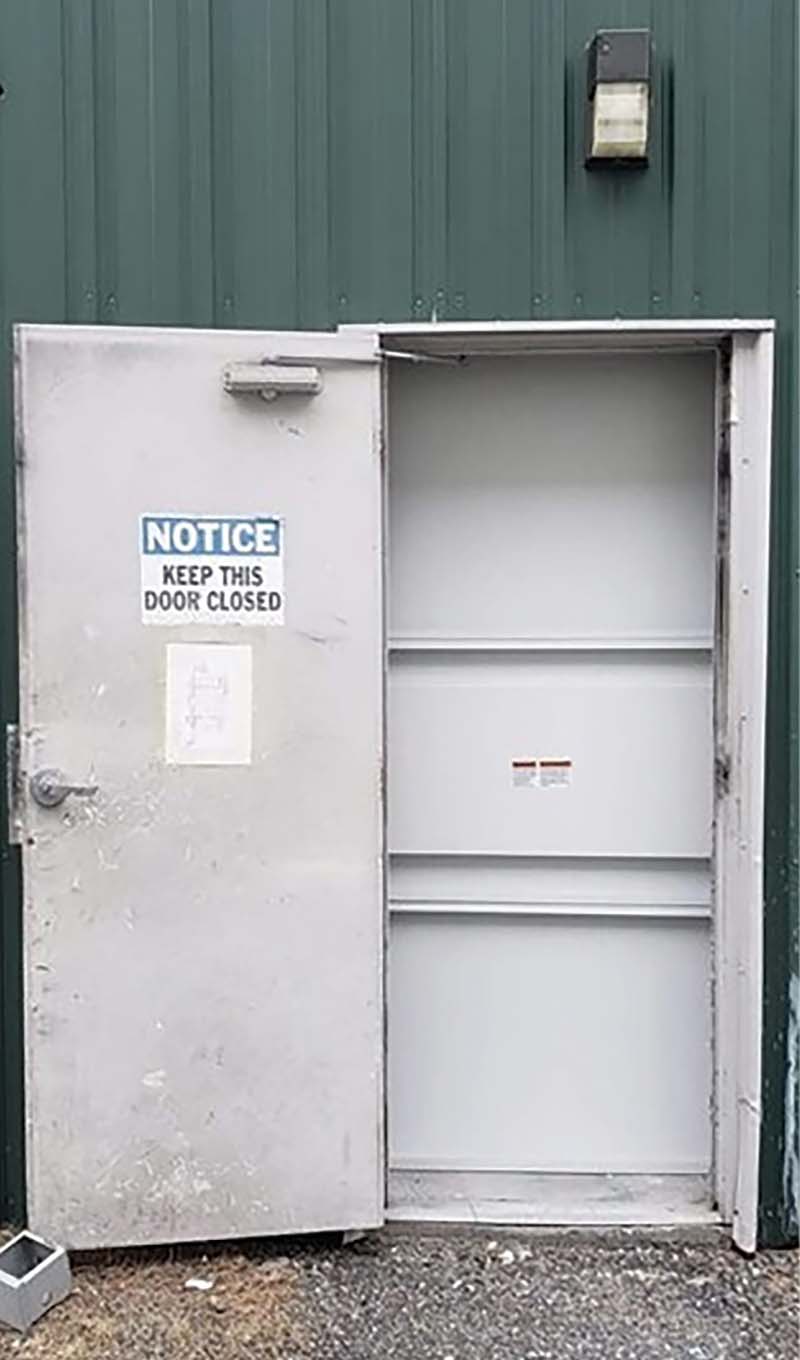
(6) An exterior door blocked by a building owner during an addition that was found during a building walk-through of an unwanted fire alarm activation. [Photo courtesy of the Trenton (ME) Volunteer Fire Department.]
Benefiting from Unwanted Alarms
We don’t always have the luxury of getting out and into the various buildings in our jurisdiction. Additionally, we may not know what special processes are being used in some of these buildings. Responding to a nonfire event can offer us a better idea of what may be going on inside a particular structure. Unless we have another call or a matter that needs to be attended to back at the station, we should take advantage to learn as much as we can about a building and its use. What processes and utilities are being used? Does this business use or have any chemicals that, if they escape containment through human error or mechanical failure, create a by-product that can mimic a by-product of combustion (suspended particles, heat, light, or toxic gases)? Are there any automatic fire alarm detection strategies in place that might alert us to that?
Some utilities such as hot water systems, steam, refrigeration, liquified gases, or other hazardous materials processes that escape in the event of a mechanical failure will simulate by-products of combustion and may cause a fire alarm to activate. More importantly, an unknown mechanical failure of one of these systems can pose unique hazards to responding firefighters.
One such utility that is used heavily and often overlooked in commercial and industrial processes is steam and hot water. Steam and hot water are great assets to many commercial and industrial processes for sterilization and heating purposes. However, when steam and hot water lose containment because of a structural or mechanical failure, they are potentially subject to an uncontrollable release, posing multiple hazards to responding fire personnel.
Figure 1. National Fire Alarm Signaling Committee False Alarm Categories
In 2013, the National Fire Alarm Signaling Committee expanded the concept of false alarms into these five basic categories to help emergency responders better manage issues related to unwanted alarms and provided the following definitions, as detailed in NFPA 72, The National Fire Alarm and Signaling Code:
• Unwanted alarm. Any alarm that occurs that is not the result of a potentially hazardous condition.
• Malicious alarm. An unwanted activation of an alarm initiating device caused by a person acting
with malice.
• Nuisance alarm. An unwanted activation of a signaling system or an alarm initiating device in
response to a stimulus or condition that is not the result of a potentially hazardous condition.
• Unintentional alarm. An unwanted activation of an alarm initiating device caused by a person
acting without malice.
• Unknown alarm. An unwanted activation of an alarm initiating device or system output function
where the cause has not been identified.
Steam itself simulates multiple fire signatures, which can activate automatic detection devices that operate on heat, gas, and/or smoke (suspended particles in the form of water vapor) principles. From a hazard response standpoint, steam can displace oxygen, causing severe burns and decreased visibility. Does the building use or have this process utility? An unwanted alarm response can give you valuable knowledge of what is going on inside a structure. If known, this knowledge that can be conveyed in advance to responders charged with finding the cause of an alarm.
Never If, But When!
We all know that time is a precious commodity. If the response allows, it is often a good time to ask the business owner to show you around. Often, the owner will oblige you to save face and show you around the facility. Even if the owner doesn’t want to take the time, there are other things you should check. Does the fire department access box have the correct keys? It is not uncommon for a business owner to change the locks on a facility, either at the request of loss prevention personnel, because of the loss of an employee who may have had access, or the key is simply missing. One large box chain has a policy in place that, in the event a key is lost, there is a mandate to re-key the locks on every door in the facility. Often, the keys in the fire department access box are not updated or information is not conveyed in a timely manner.
Have there been other changes to the structure? Small renovations that may not have required a permit or other building modification can come as a surprise such as an exit or access door that is now blocked or no longer in use.
Figure 2. The Four Automatic Detection Strategies

These detection strategies are based on the four primary by-products of combustion. The problem encountered is that automatic detection cannot differentiate between a by-product of combustion and a nuisance source. Ask the question: How many of these by-products of combustion can be simulated by a nonfire source?
As firefighters, our conversations often center around things that may require us to modify our tactics. Discussing these things after a nonfire event provides an opportunity for impromptu training discussions. By taking advantage of the event, we can ascertain a wide variety of things from the response such as the following:
- Did everyone evacuate?
- What was the facility’s housekeeping like?
- How cluttered were the mechanical and utility spaces, offices, corridors?
- Where did you observe other entry and exit points?
- Which way did the exterior doors swing?
- What locking mechanisms were observed?
- Did you notice any fire partitions inside the structure as well as the locations of fire doors and stairways?
- Where was the fire department connection, and was it readily accessible?
- Where is the nearest fire hydrant or water supply?
- What was the apparatus access like?
- Is the building protected with automatic fire sprinklers or other suppression equipment?
- Did you observe any other fire protection equipment?
- Was there a fire pump? Did it appear that it was being maintained, and did you see tags that indicate its maintenance?
- What chemical processes were in use, where were they stored, and what hazards do they represent?
Lastly, if a building-process utility or chemical hazard is released, will its properties mimic one of the four primary by-products of combustion and, subsequently, cause the fire alarm system to generate a signal that uses one or more of those four primary automatic detection strategies for activation? If so, how will this affect your operational strategy?
Responding to an unwanted alarm can afford the opportunity to provide us with some valuable information that can directly aid in situational awareness, personal safety, and overall company response.
References
1. Fire and Water Engineering. September 29, 1896.
2. National Fire Protection Association 72 -2013 National Fire Alarm and Signaling Code. National Fire Protection Association.
3. National Fire Code Vol IV Extinguishing and Alarm Equipment, 1946. © National Fire Protection Association.
STEVEN HECKMAN is the deputy chief for the Trenton (ME) Volunteer Fire Department. He is also a facility supervisor for the Jackson Laboratory in Bar Harbor, Maine, where he is responsible for fire protection systems, electrical infrastructure, and building envelopes. He has an A.A.S. in fire science, National Institute for Certification in Engineering Technologies, and other fire service certifications. Heckman is an adjunct instructor for Eastern Maine Community College’s Fire Science Program and serves as a fire instructor for the Hancock County Fire Academy and the Maine Fire Service Institute.

